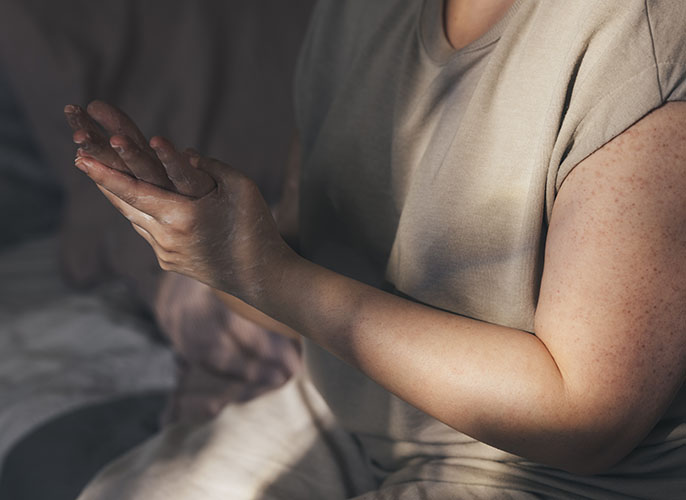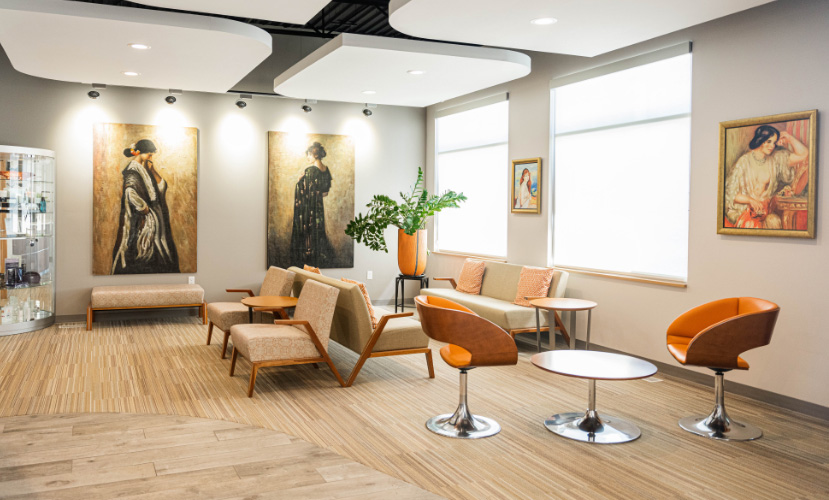Introduction
Lymphedema is a lifelong, chronic disease of the lymphatic system caused by clogged lymphatic vessels. The most prominent symptom of lymphedema is swelling of the upper or lower extremities, sometimes even accumulating 2-3 liters of fluid in one limb. At Advanced Plastic Surgery, we most often see patients who have acquired lymphedema through surgical complications associated with surgical cancer treatments such as mastectomy with lymph node biopsy or dissection. Fortunately, there are certain courses of action that can be taken to keep the chronic effects of lymphedema under control.


Causes of Lymphedema
The lymphatic system is most closely related to the immune system. The cause of lymphedema stems from an injury and scarring of lymphatic pathway or congenital malfunction or absence of lymphatic vessels and/or nodes. Physiologically, the lymphatic fluid is naturally produced at the pressure change that occurs when blood vessels naturally diverge and narrow into smaller vessels along the length of arms and legs. Fluid can leak out of these vessels and into the surrounding tissue due to pressure changes in the limbs. Luckily, the lymphatic system picks up these fluids and transports them in lymphatic vessels. These vessels then carry lymph up the length of the arm while passing through small lymph nodes which act like white blood vessel-filled filtration stations. Once the fluid reaches the chest, it drains back into large blood vessels and restarts the filtration system. However, there are no other drainage points along the lymphatic vessels’ route to the chest into which they can empty. A problem arises when the lymph vessels, travelling towards the chest become obstructed. The fluid
Lymphedema and Surgery
Acquired lymphedema can arise from the surgical treatment of cancer, for preventative measures include removing the parts of the immune system that may house colonies of cancer cells- the lymph nodes. The excision can unintentionally obstruct drainage pathways for the lymph, and so the swelling occurs. Cancer and radiation treatment can also do such damage to the lymphatic system. If in the earlier stages, the vessels themselves can be salvaged and reconnected to lymph nodes via microsurgery. However, later stages of the disease cause the vessels to solidify. Moreover, fluid released from the disconnected lymph vessels prompts adipocyte precursor cells to differentiate into fat cells, populating the mass of fluid with a permanent mass of fat.
Treatment Options
Though this disease is not fully curable, there are various treatment options that can minimize the severity of the disease. One such treatment is lymphaticovenous anastomosis which entails reconnecting lymph vessels with blood vessels to allow fluid to drain from the limbs. Special visualization techniques are used to map the vessels and lymph nodes on the skin before any incisions are made. Moreover, the incisions are about an inch and a half large, making scarring minimal. Few plastic surgeons are trained in the field of microsurgery in order to conduct these procedures. Dr. Timek possesses the skills to conduct such procedures. For later stages of lymphedema, liposuction may be an advised option to remove the fat cells that differentiated from the lymph fluid trigger under the skin.
– Ewa Timek, MD


Post-Treatment Care
AT ADVANCED PLASTIC SURGERY
If you have just undergone radiation therapy or had surgery for cancer, key preventative measures include keeping the limb raised above the heart to induce a downward flow of fluid. Refrain from applying ice or wearing tight clothing. In the event of lymphedema-associated swelling, consult your doctor as soon as possible to arrange a visit and potential diagnostic tests such as lymphoscintigraphy or MRI. Compression garments, bandages, or pumps are also advised to help fluid flow and prevent buildup. Exercise in moderation is also advised to strengthen the body as it compensates for internal loss of function.


Average Cost
how much does Lymphaticovenous Bypass cost in grand rapids?
The cost of Lymphaticovenous Bypass in Grand Rapids is largely dependent on the technique Dr. Timek uses and the severity of your Lymphedema, among other factors. After you come in for your consultation, Dr. Timek will have a better understanding of what you need and how to help you. When she collects all this information and makes your treatment plan, our Patient Coordinator will be able to give you a cost breakdown.
Insurance coverage for Lymphedema surgery depends on your insurance policy and your Lymphedema condition. Dr. Timek’s care team is dedicated to helping patients navigate various insurance issues. We highly recommend patients also seek assistance from their health advocates.
A Hopeful Future
The diagnosis of lymphedema can be an unforeseen consequence of cancer-fighting therapies, a factor that can potentially bring down the morale of the patient. It is crucial to keep a positive mindset at the forefront of the treatment plan, focusing on the solutions and treatments for the problem. Dr. Timek and the staff at Advanced Plastic Surgery will address all your concerns, knowledgeably direct you toward the best therapeutic options, and provide emotional support all along the way.

Become a Patient
contact us
Living with Lymphodema can be very uncomfortable and sometimes painful for patients. If you are interested in getting treated for Lymphodema in Grand Rapids, contact Advanced Plastic Surgery and schedule your consultation. You can call our clinic at (616) 323-3102 or request an appointment through our website, and one of our wonderful and knowledgeable team members will be in touch with you.
Patient Resources
Advanced Plastic Surgery
We’re here to help, with a number of patient resources designed to make your experience as comfortable as possible. Read through the materials below, and don’t hesitate to reach out.



